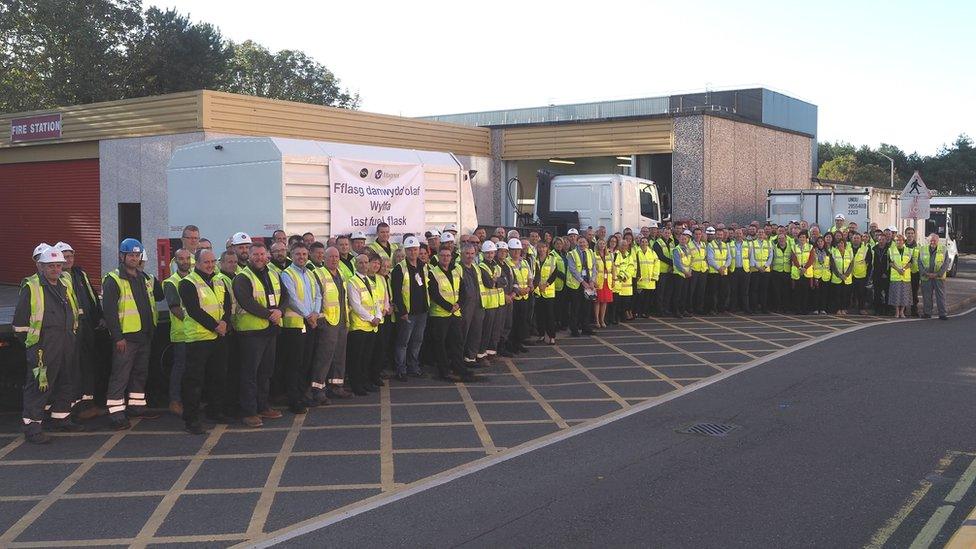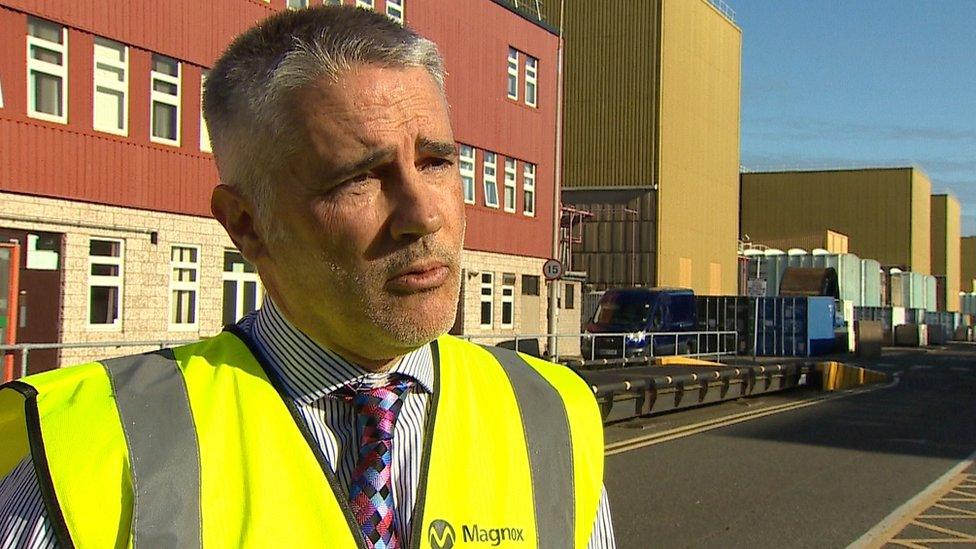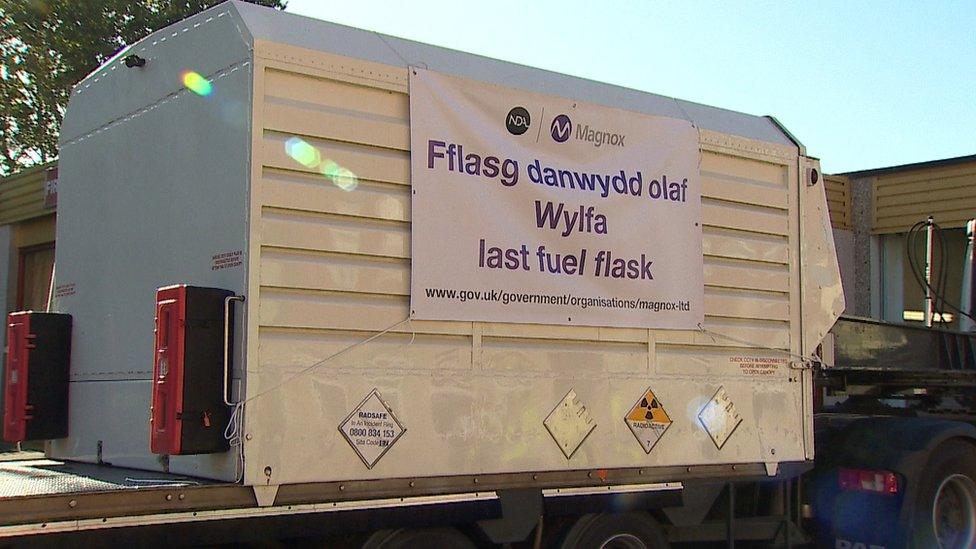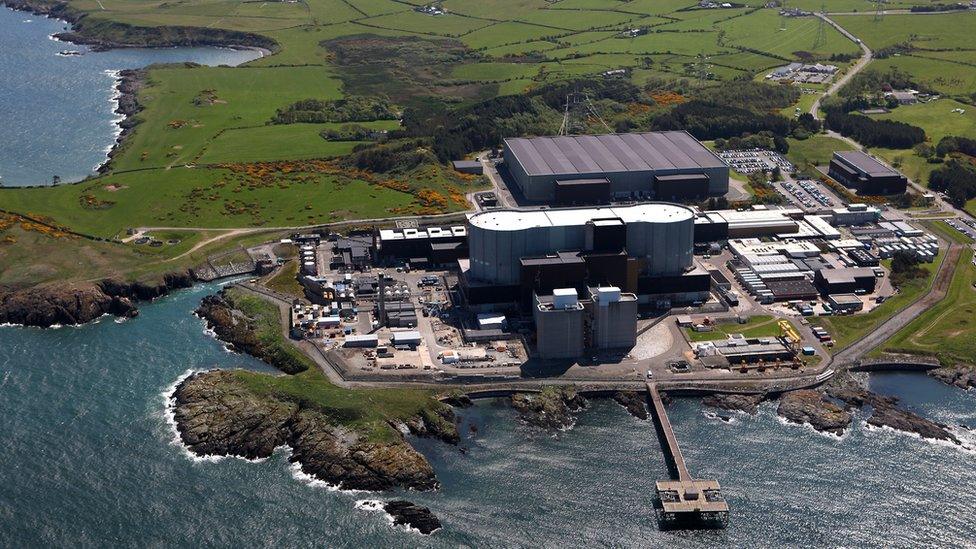Wylfa: Last nuclear fuel leaves Anglesey power station
- Published

Staff mark the milestone - as the final nuclear fuel flask leaves Wylfa on Anglesey
A massive five-year engineering project to remove nuclear fuel from the UK's last Magnox power station has come to an end.
The final flask of fuel elements from Wylfa on Anglesey arrived in Cumbria on Thursday morning.
In total, nearly 90,000 Magnox fuel rods have been removed from the two reactors at the island's plant.
It now means a workforce that once stood at about 600 will be reduced to just 175 by the end of November.
"It's the end of an era - and it comes with some pain," said Tim Dunham, head of nuclear operations for Magnox, which is now part of the Nuclear Decommissioning Authority overseeing the work at Wylfa.
"All of us are now looking for something else to do - and change is challenging."

'End of an era' for Wylfa, says Tim Dunham from Magnox
Mr Dunham said the expertise of the engineering teams at Wylfa meant few would be out of work, but recognised that for some it remained a difficult time.
Wylfa ended electricity generation in December 2015, and since then the focus has been on removing all the remaining fuel elements.
According to Magnox officials, it means 99% of all radioactive material at Wylfa has now been removed.
But the project has not been without incident - the initial timetable began to slip as 40-year-old machinery had difficulty coping with the pace.
"The machinery was struggling, so we were having failures - failures that we had never seen before," admitted Nigel Roberts, the head of system engineering at Wylfa.
"It involved thinking differently - thinking outside the box. Obviously, when you've got engineers that are capable of doing that, coupled with investment, it makes the task significantly easier."

Site director Stuart Law said Thursday was "a significant landmark in the site's journey"
Decommissioning at Wylfa now moves into another phase - preparation for what is known as "care and maintenance" will get under way in December, as much of the site is cleared.
Buildings will be demolished and the giant turbine halls once powered by steam heated by the nuclear reactors will be dismantled.
Site director Stuart Law said that would take up to seven years, leaving only the two reactor buildings and the empty dry fuel stores.
Under current plans, those final buildings will be monitored for a century - until about 2126 - when radiation will have decreased to manageable levels.
"I am extremely proud of the whole team for working together to reach this important milestone in record time," said Mr Law.
- Published26 June 2019

- Published2 January 2018

- Published23 July 2019
